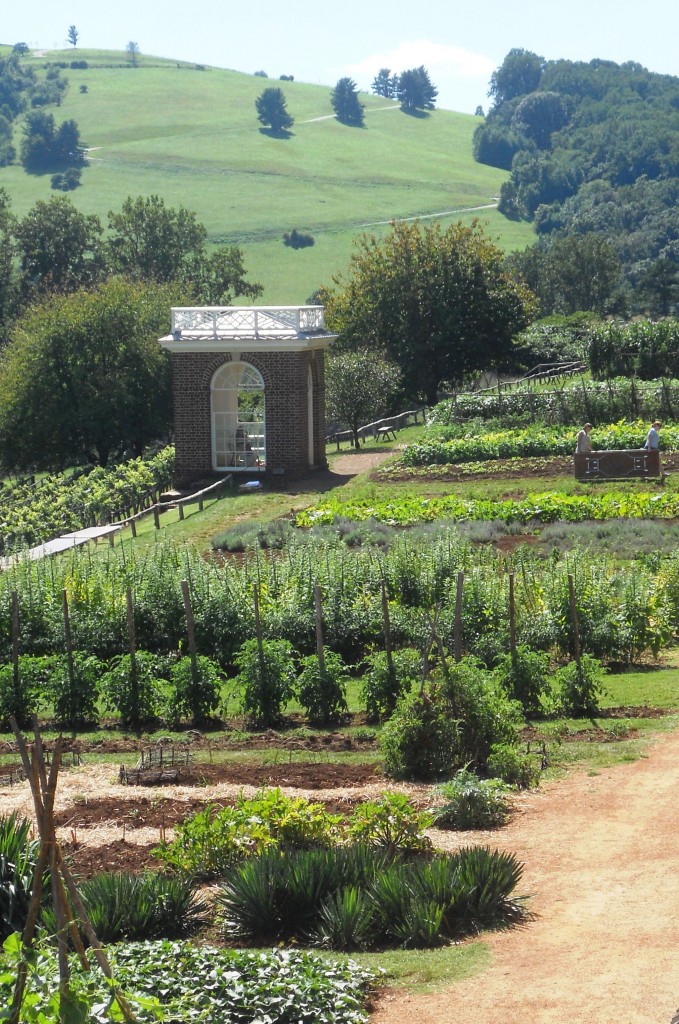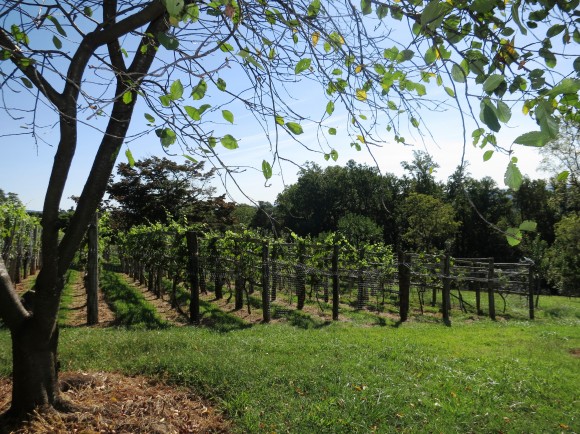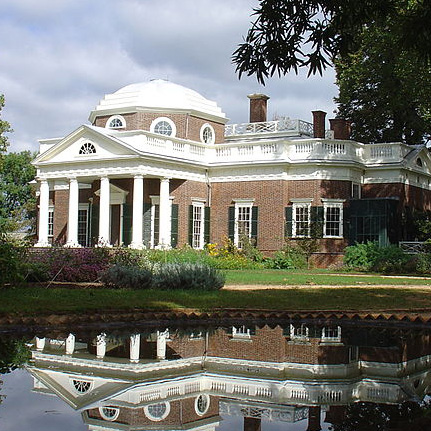Gardeners share.
They share seeds. They share plants. They share tips.
They share the knowledge accumulated during a lifetime of gardening.
And of course they share the harvest.
This fall I had the opportunity to share in a celebration of the harvest. I traveled to Monticello, Thomas Jefferson’s great Virginia estate (in the fine company of Chicago Botanic Garden horticulturists Lisa Hilgenberg and Nancy Clifton) for the annual Heritage Harvest Festival there. It was my first visit to the garden on the mountaintop, and in a whirlwind weekend of seminars, tours, and tastings, it changed the way that I think about growing food.

Architecture, history, and nature come together in a powerful narrative at Monticello, and the Harvest Festival brought the story of the place to life. But it was in the vegetable garden—carved into the side of the hill, with a simple layout and a world-class view—that I learned some important things about how Thomas Jefferson gardened.
#1: He shared seeds and plants.
In our still-young country, folks foraged for food—there weren’t a lot of native crops being grown. So Jefferson swapped seedlings with other farmers and gardeners. He asked embassies from around the world to send him seeds. He grew out plants and tested them to see what would grow on the mountain at Monticello. And he shared what he learned by keeping amazing records—check out his Garden Book at the Massachusetts Historical Society website.
#2: He experimented constantly.
Jefferson was our first “foodie,” who grew his own produce for the food that he wanted to eat and serve. He experimented with crops that sound unusual even today: he tried raising sesame for its oil (he liked the taste) and he grew artichokes, still rare in American gardens. He decided to grow hot-weather vegetables (tomatoes, sweet potatoes, peppers) at a time when cold-weather gardening (cabbages, onions, greens) prevailed. His experiments proved that it could be done…the practice caught on…and today we consider tomatoes a basic garden crop.
#3: He wasn’t afraid to fail.
One of Jefferson’s great desires was to grow grapes for wine. Although he later came to be called the “Father of American wines,” Jefferson failed many times with grapes. But he kept at it, took notes, tried again. And eventually he succeeded with 23 different grape varieties.
Same with fruit trees. Jefferson tried peach, apricot, pear, cherry, plum, nectarine, quince, and 18 varieties of apple trees at Monticello. Plus figs, which, it turned out, grow fabulously along a protected site in the orchard. (Best Monticello moment: the orchardist telling us all to pick a fresh fig and eat it on the spot.) Many trees succumbed to the weather or to lack of water, but Jefferson persevered. The orchards bear fruit to this day.

As this harvest season comes to a close, and as we gather ‘round the table to celebrate, I am profoundly grateful for all that my garden and gardening friends have shared with me. I’m thinking differently about next year: I want to experiment with new crops…try growing a couple of fruit trees…order some really unusual seeds…and fail spectacularly at a thing or two. And, of course, share the harvest.
Happy Thanksgiving, everyone!
©2013 Chicago Botanic Garden and my.chicagobotanic.org

